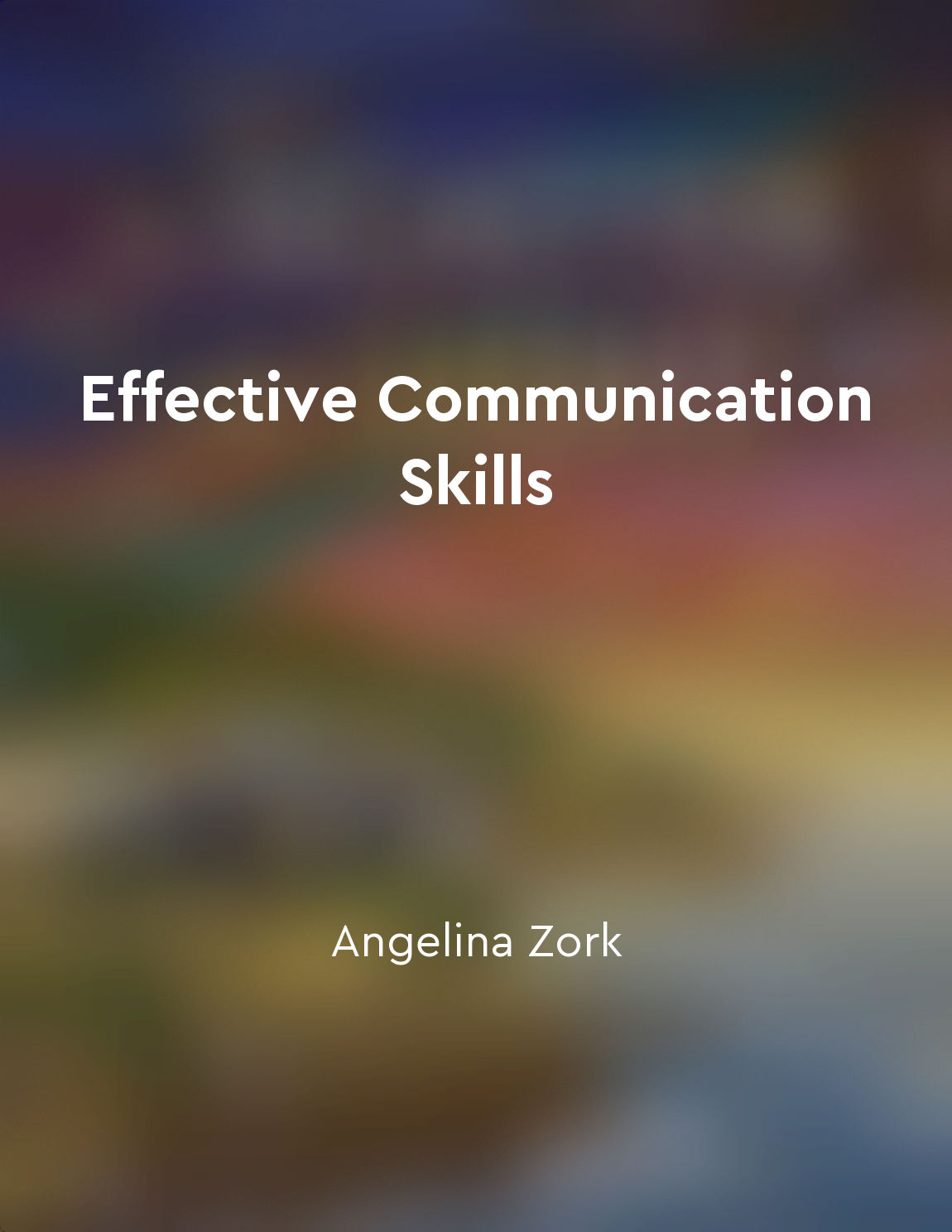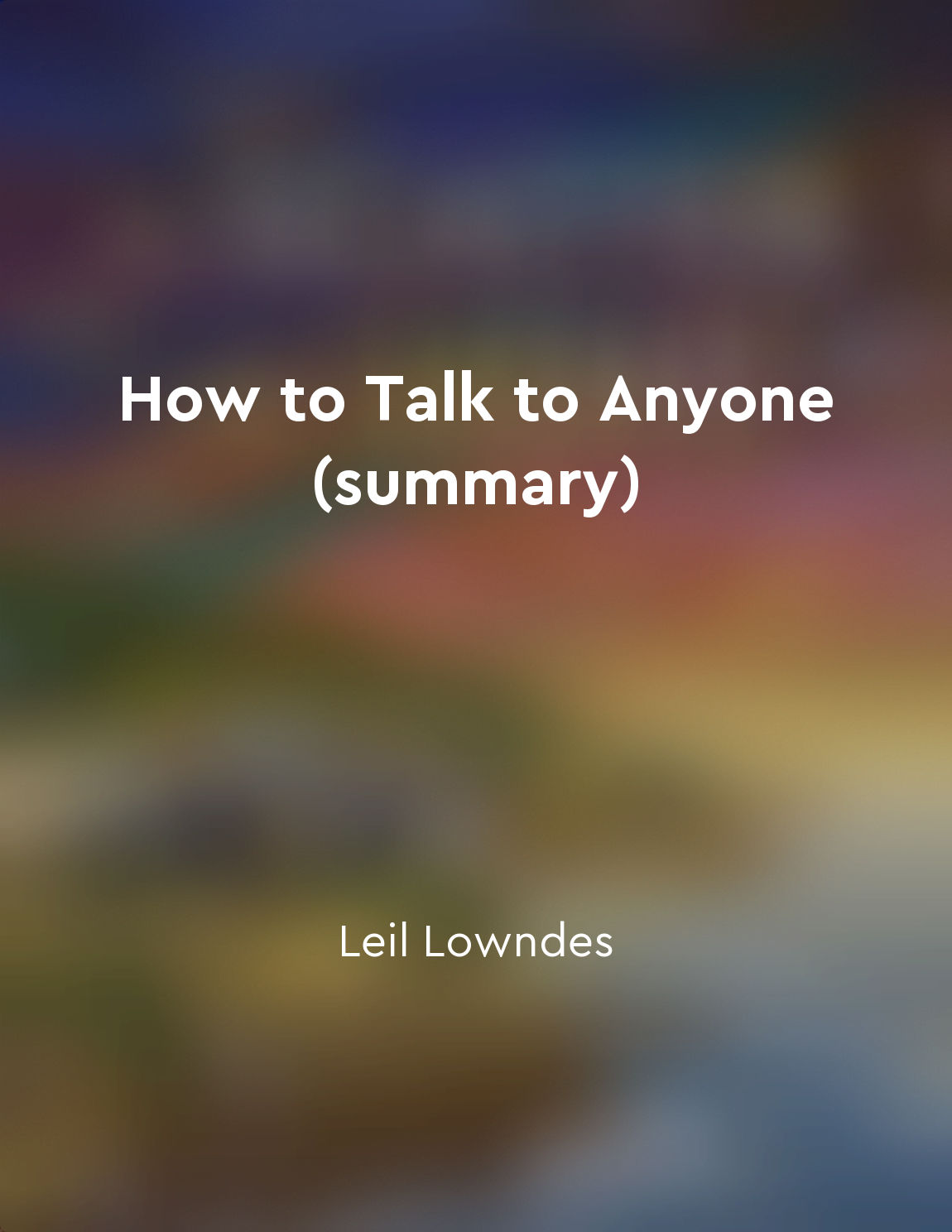Pay attention to nonverbal cues from "summary" of How to Talk to Anyone (summary) by Leil Lowndes
When engaging in conversation, it is crucial to pay close attention to the nonverbal cues being expressed by the other person. These cues can provide valuable insights into the person's thoughts, feelings, and intentions, even when their words may be saying something different. Nonverbal cues include facial expressions, body language, tone of voice, and overall demeanor. By tuning into these signals, you can better understand the true meaning behind what the person is saying. For example, if someone is telling you about a recent accomplishment but their body language is closed off and their tone is flat, it may indicate that they are actually feeling insecure or unsure about their success. In this case, you can offer words of encouragement or support to help boost their confidence. On the other hand, if someone is discussing a difficult situation with a smile on their face and relaxed posture, it may signal that they are trying to keep a brave front but are actually feeling upset or anxious. By recognizing this discrepancy, you can offer a listening ear or a shoulder to lean on. Furthermore, paying attention to nonverbal cues can also help you adjust your own behavior and communication style to better connect with the other person. For instance, if you notice that someone is leaning in and making consistent eye contact while you are speaking, it indicates that they are engaged and interested in what you have to say. In response, you can continue sharing your thoughts and experiences in a more detailed and animated manner to keep them engaged. On the contrary, if you observe that someone is crossing their arms, avoiding eye contact, and fidgeting while you are talking, it may suggest that they are feeling uncomfortable or disinterested in the conversation. In this situation, you can try changing the topic, asking open-ended questions, or offering a sincere compliment to re-engage them and make them feel more at ease.- Paying attention to nonverbal cues is a valuable skill that can enhance your communication abilities and deepen your connections with others. By being mindful of the signals being expressed through body language, facial expressions, and tone of voice, you can gain a deeper understanding of the person you are speaking with and respond in a more thoughtful and empathetic manner. This can lead to more meaningful and fulfilling interactions that foster trust, respect, and mutual understanding.
Similar Posts
Being aware of one's own biases is crucial for effective listening
It is essential to recognize that each of us carries biases within us. These biases can influence how we listen to others. If w...
Practice good vocal delivery for impact
To make your words truly impactful, you must pay attention to how you deliver them. Your vocal delivery plays a crucial role in...
Personal space boundaries differ among individuals and cultures
The distance that individuals prefer to maintain between themselves and others can vary greatly from person to person. Some peo...

Building trust is a foundation for effective communication
Trust is the cornerstone upon which effective communication is built. Without trust, communication can be fraught with misunder...

Be aware of your own body language
Being aware of your own body language is crucial when it comes to effectively reading people. Your body language can often comm...
Be aware of cultural differences in communication
When communicating with people from different cultures, it is important to remember that not everyone shares the same communica...
Effective communication requires active listening
Effective communication is a two-way street that involves both speaking and listening. However, many people tend to focus more ...
Show appreciation for others' contributions
When someone has done something nice for you, don’t just think, “How nice of them.” Consider what they went through to give you...

Manipulating language is an art form
The ability to manipulate language is a skill that can be honed and perfected over time. It is not simply about using words to ...
Mastering nonverbal communication enhances relationships
Understanding the power of nonverbal communication can have a profound impact on the quality of our relationships. Our body lan...


